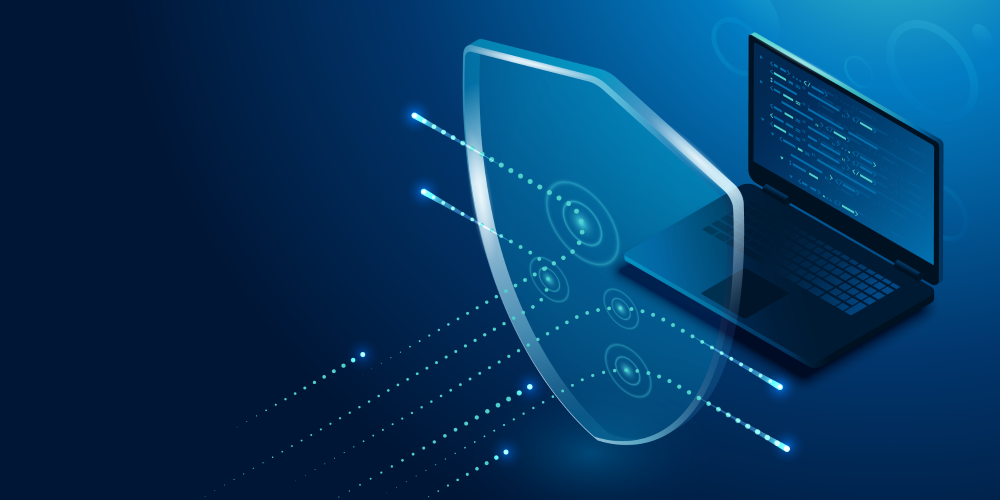5 Crucial Steps for Ensuring Data Security in Your Intelligent Information Management Solution

2023 saw a 72% increase in data breaches since 2021, which held the previous all-time record, while breaches are causing organizations and individuals a collective average of $4.88 million in 2024 (Forbes). While switching to a cloud provider allows server security to be handled by highly trained professionals, a few best practices still fall to individual organizations, including protecting individual accounts, educating staff, and mitigating risks.
In fact, email alone accounted for 35% of malware attacks in 2023, with business email compromises resulting in over $2.9 billion in losses (Forbes), clearly illustrating the importance of protecting individual user accounts. Internal best practices are necessary to ensure information security in your organization, and we’re here to help. In this blog, we’ve outlined 5 crucial steps to data security in your Intelligent Information Management (IIM) solution, with best practices for each.
1. Implement Multi-Factor Authentication (MFA)
One of the most effective ways to enhance information security is implementing Multi-Factor Authentication (MFA). MFA adds an extra layer of protection beyond a simple password, requiring users to verify their identity through a secondary method, such as a mobile app or email confirmation.
By requiring multiple forms of verification, MFA helps prevent unauthorized access to sensitive information, even if passwords are compromised. This gives account owners valuable time to react by changing login credentials and notifying security professionals within their organization. For organizations looking to secure digital solutions, MFA is a simple yet powerful tool ensuring only authorized users gain access.
Best practices for implementing MFA:
- Use MFA for all accounts, especially those with access to sensitive information.
- Offer multiple verification methods, such as SMS, email, and authenticator apps.
- Regularly review and update MFA settings to stay aligned with security standards.
2. Leverage Role-Based Access Control (RBAC)
Role-Based Access Controls (RBAC) allow organizations to permit or restrict access to certain features, interfaces, and information based on the assigned roles of individual users. This limits the number of people who can view or modify sensitive information, reducing the risk of data breaches by minimizing access points. It also ensures that employees only interact with the data relevant to their responsibilities, a critical step in maintaining the security of your digital solutions.
Best practices for managing RBAC:
- Assign clear roles and responsibilities to each user.
- Regularly audit user access levels and adjust them as necessary.
- Limit access to sensitive data based on job function or department.
3. Provide Employee Training & Awareness
Human error is one of the leading causes of information security breaches. In fact, a Verizon report estimates that 74% of breaches include some human element. Even the most robust digital solutions can be compromised if employees are unaware of potential risks, such as phishing scams or weak passwords. That’s why businesses must provide regular security training and promote cybersecurity awareness among their staff.
Training employees on the importance of information security helps them recognize and avoid common threats, such as unusual requests for information or suspicious links. In fact, Square 9 provides this training to all employees annually as part of its SOC compliance. By fostering a culture of collective responsibility for data security, businesses can significantly reduce the risk of breaches.
Best practices for employee training:
- Offer regular cybersecurity training for all staff members.
- Implement strong password policies and encourage the use of password managers.
- Train employees to recognize phishing attempts and report suspicious activity.
4. Secure Backup and Disaster Recovery Plans
Ensuring that data is backed up regularly is essential for protecting your business against data loss, ransomware attacks, and other cyber threats. A robust backup and disaster recovery plan helps restore operations quickly after an incident, minimizing downtime and ensuring business continuity.
Square 9 Softworks’ GlobalSearch offers secure backup processes, ensuring that your data is safe and easily recoverable in the event of an attack or system failure.
Best practices for secure backup and recovery:
- Automate data backups to occur regularly without manual intervention.
- Store backups in a secure, off-site location to protect against physical disasters.
- Test disaster recovery plans regularly to ensure data can be restored quickly.
5. Stay Current with Software Updates and Patch Management
Outdated software can create vulnerabilities that cybercriminals exploit. Regularly updating your software and applying security patches ensures your systems remain protected against the latest threats. This goes beyond your digital solutions, too. Your devices and networks rely on interdependent systems; other software on these devices should be kept up to date as well, especially operating systems (ex., Windows, Mac OS, etc.) and web browsers.
Automated patch management simplifies this process, helping businesses stay up-to-date without interrupting daily operations. Ensuring that your digital solutions are equipped with the latest security patches is a crucial component of protecting your information, so opting for patch management where it exists is typically a sound idea.
Best practices for software updates:
- Enable automatic updates for all software and systems.
- Schedule regular maintenance windows to apply patches and updates.
- Monitor patch releases and ensure they are implemented as soon as possible.
In Summary
Security best practices within your organization are a crucial component of protecting your information. By adopting strategies to mitigate vulnerabilities and keep staff informed, organizations can significantly reduce the risk of data breaches and cyber threats.
Why Square 9
Square 9 is a leading provider of AI-powered intelligent information management solutions that take the paper out of work and make it easier to get things done. With digital workflows that automate many aspects of how you work today, we make it easy by extracting information from scans or PDFs, storing documents in a searchable archive, and building digital twins of your current processes through graphical workflows.


